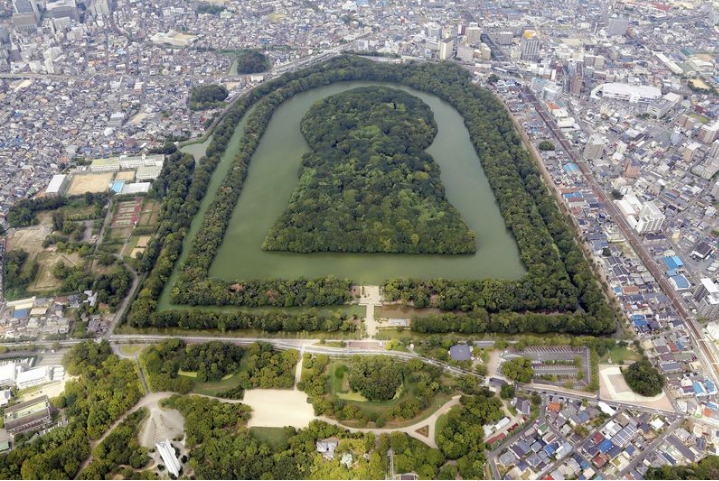Ancient tombs eyed for World Heritage list
 The Council for Cultural Affairs decided on Monday to recommend Mozu-Furuichi Kofungun ancient tumulus clusters in Osaka Prefecture for UNESCO World Heritage listing in 2019.
The Council for Cultural Affairs decided on Monday to recommend Mozu-Furuichi Kofungun ancient tumulus clusters in Osaka Prefecture for UNESCO World Heritage listing in 2019.
After the Cabinet approves the decision, the government will submit official documents of recommendation to UNESCO by Feb. 1 next year.
The U.N. organization is expected to make a decision in summer 2019 on whether the tombs will make it to the cultural heritage list.
Mozu-Furuichi Kofungun comprises a total of 49 tumuli in the Mozu cluster in Sakai and the Furuichi cluster straddling Habikino and Fujiidera.
The burial mounds were built between the late fourth century and late fifth century at the height of the country’s tumulus period, and are said to be the final resting places of ancient kings and people associated with them.
The Mozu cluster has the tomb of Emperor Nintoku, the 486-meter-long keyhole-shaped grave mound also known as Daisen Kofun, the biggest tumulus in the country.
The culture ministry’s council also considered Jomon period ruins in Hokkaido, Aomori, Iwate and Akita prefectures as well as the Sado mines in Niigata Prefecture for recommendation but decided to pass over them.
So far, 17 Japanese sites have been inscribed on the UNESCO list, including The Sacred Island of Okinoshima and Associated Sites in the southwestern prefecture of Fukuoka, which was registered earlier this month.Speech
Source
